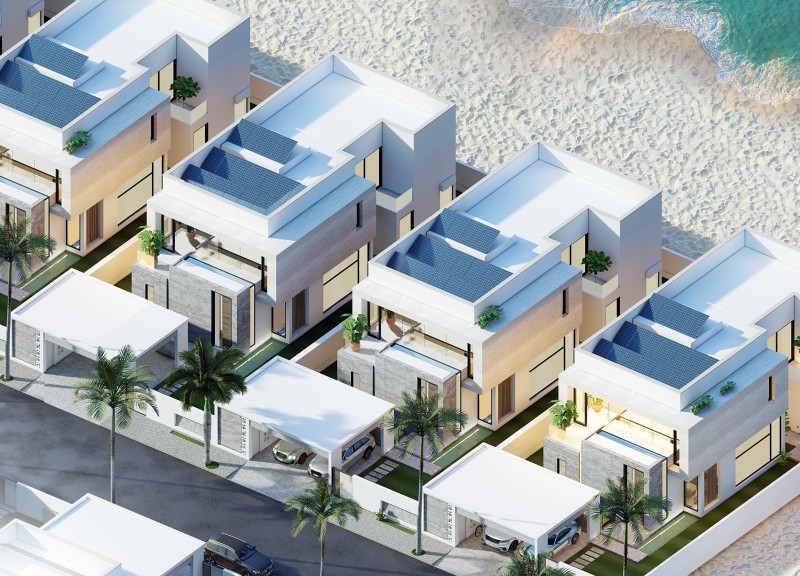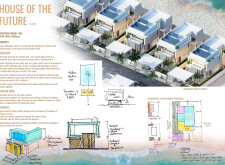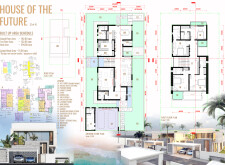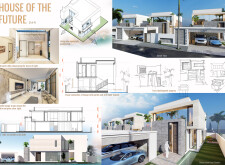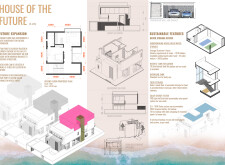5 key facts about this project
**Overview**
Situated in Dubai, United Arab Emirates, the House of the Future occupies a plot area of 450 square meters, comprising a built area of 294 square meters. The design intent combines historical and cultural influences with contemporary architecture, promoting a dialogue between the past and modern living. The structure emphasizes a harmonious relationship with its social context while adapting to the nuances of current lifestyle demands.
**Spatial Organization**
The project features a distinct spatial layout that prioritizes functionality and connectivity. A prominent entryway leads to a double-height lobby that serves as a gallery, allowing natural light to permeate the space through a large fixed window. The ground floor is structured to facilitate interaction between indoor and outdoor environments, with garden views accessible from key living areas. The design delineates zones for guests, bedrooms, and private family spaces, promoting both privacy and openness while optimizing natural light and ventilation throughout.
**Material Selection and Sustainability**
A thoughtful selection of materials underscores the project's commitment to sustainability and aesthetic coherence. Concrete provides structural integrity, while travertine enhances the lobby's exterior with natural beauty and durability. Large glass windows and doors promote transparency, connecting occupants with the surrounding environment. Metal accents and stone cladding contribute both modernity and textured warmth, while wood finishes offer a traditional touch.
Sustainability features include strategically placed windows and skylights for natural light optimization, as well as provisions for water storage and solar energy systems. The design anticipates future adaptability, allowing for the potential horizontal expansion of the second floor, thus minimizing disruption to the existing structure. Additionally, the integration of fluid indoor spaces encourages family interaction and social engagement, reinforcing the home’s connection to both inhabitants and its natural surroundings.


